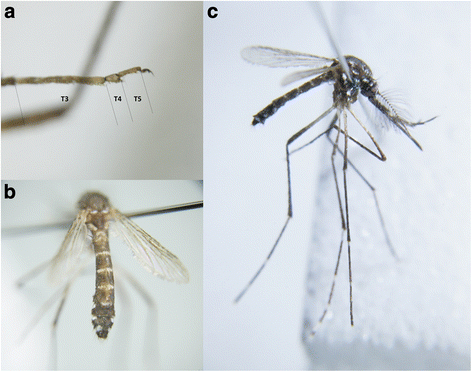Discovery of a single male Aedes aegypti (L.) in Merseyside, England
- PMID: 28646879
- PMCID: PMC5483247
- DOI: 10.1186/s13071-017-2251-0
Discovery of a single male Aedes aegypti (L.) in Merseyside, England
Abstract
Background: The mosquito Aedes aegypti (L.) is found in tropical and sub-tropical regions where it is the major vector of dengue fever, yellow fever, chikungunya and more recently Zika virus. Given its importance as a vector of arboviruses and its propensity to be transported to new regions, the European Centre for Disease Prevention and Control (ECDC) has placed Ae. aegypti on a list of potentially invasive mosquito species. It was previously reported in the United Kingdom (UK) in 1865 and 1919 but did not establish on either occasion. It is now beginning to reappear in European countries and has been recorded in the Netherlands (not established) and Madeira (Portugal), as well as southern Russia, Georgia and Turkey.
Results: During summer 2014, a single male Ae. aegypti was captured during mosquito collections in north-western England using a sweep net. Morphological identification complimented by sequencing of the ITS2 rDNA, and cox1 mtDNA regions, confirmed the species. Following confirmation, a programme of targeted surveillance was implemented around the collection site by first identifying potential larval habitats in greenhouses, a cemetery, a farm and industrial units. Despite intensive surveillance around the location, no other Ae. aegypti specimens were collected using a combination of sweep netting, larval dipping, mosquito magnets, BG sentinel traps and ovitraps. All species collected were native to the UK.
Conclusion: The finding of the single male Ae. aegypti, while significant, presents no apparent disease risk to public health, and the follow-up survey suggests that there was no established population. However, this report does highlight the need for vigilance and robust surveillance, and the requirement for procedures to be in place to investigate such findings.
Keywords: Aedes aegypti; England; Invasive; Mosquito; Surveillance; UK.
Conflict of interest statement
Consent for publication
Not applicable.
Competing interests
The authors declare that they have no competing interests.
Publisher’s Note
Springer Nature remains neutral with regard to jurisdictional claims in published maps and institutional affiliations.
Figures
References
-
- Galindo-Fraga A, Ochoa-Hein E, Sifuentes-Osornio J, Ruiz-Palacios G. Zika virus. A new epidemic on our doorstep. Rev Investig Clin. 2015;67:329–332. - PubMed
-
- European Centre for Disease Prevention and Control. Guidelines for the surveillance of invasive mosquitoes in Europe. ECDC; 2012. http://ecdc.europa.eu/en/publications/_layouts/forms/Publication_DispFor.... Accessed 3 Jan 2016.
MeSH terms
Substances
LinkOut - more resources
Full Text Sources
Other Literature Sources




